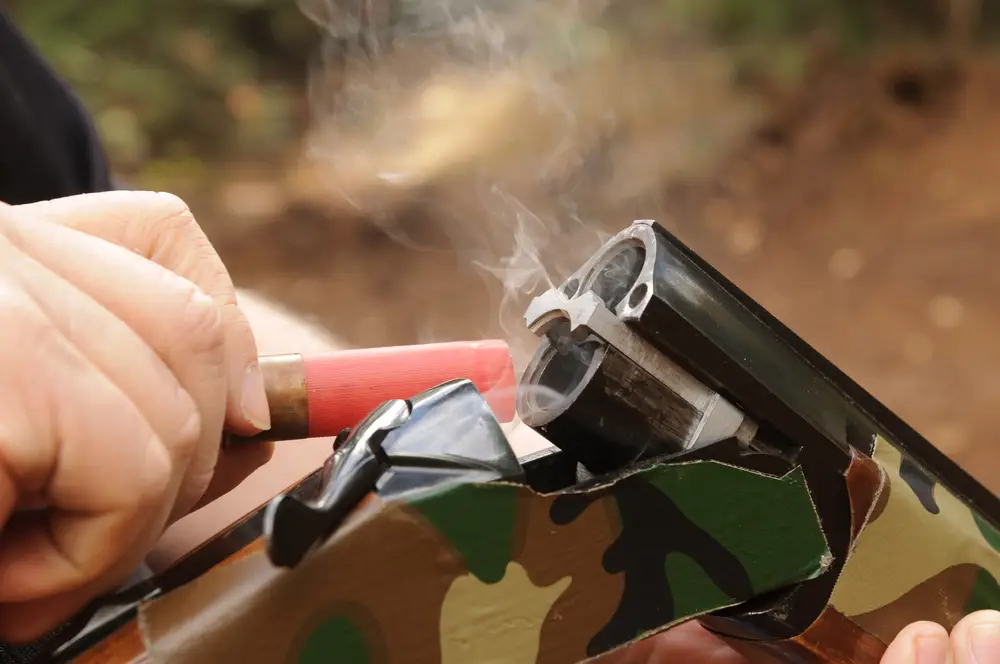Autumn is prime time for shooting sports and anyone who has spent a morning in a duck or deer blind has likely experienced some back aches and pain from handling a shotgun or rifle during a hunting trip. While this is expected for older men and women who only get out in the field a few times a year, this back pain resulting from shooting can affect younger shooters as well – even when they are Olympic champions.
The back specialists at Texas Back Institute treat many injuries caused by strains caused by shooting every year and Dr. Richard Guyer has some insights to help infrequent hunters avoid this back pain. Before you grab your gun and gear, you might want to give his advice a shot!
Back Injuries Threaten the Career of Olympian
According to the USA Shooting Team, Sarah Scherer, a 2012 Olympian was forced to withdraw from the 2014 World Shooting Championships in early September as the result of a back injury. This condition prevented her from training properly and would have kept her from traveling and competing without significant pain and limitation of her shooting.
As with most athletes in this sport, Scherer has dealt with minor back pain throughout her career, but it worsened significantly in August 2014. According to news reports, pain from three herniated discs was so severe that she was sent home early and placed on an aggressive physical therapy program in hopes of getting her ready to compete.
All that effort proved insignificant in treating the pain and condition and thus Scherer, in consultation with the U.S. Olympic Committee medical team lead by USA Shooting sport physiotherapist Cathy Arnot and Dr. Bill Moreau, ultimately decided the best path was to not compete and aggressively treat her symptoms with surgery likely in the near future.
Scherer was a two-time NCAA National Champion in smallbore (.22 caliber) rifle at Texas Christian University while also leading the Horned Frogs to two national team titles. At the 2010 World Championships, she was a junior silver medalist in three-position rifle while teaming with Amanda Furrer and Sarah Beard for a team title. She earned a bronze medal in three-position at the USA World Cup earlier this season in Ft. Benning, Georgia.
According to the USOC medical team, Scherer has two disc extrusions- one at L3-4 and one at L4-5 and a disc protrusion at L5-S1. The end result is pain, loss of muscle function and sensation in her legs and an inability to get into shooting position without creating more pressure on the spinal nerves. Her symptoms have not responded to high dose steroids or physical therapy. The likely next steps for Scherer will include spinal injection, and a probable spinal decompression at the affected levels.
Prognosis for the Olympic Shooter
For a young woman, who has world-class conditioning and impeccable shooting form to be sidelined by these types of back injuries suggests a high degree of risk of back pain for those shooters who are older, perhaps out of shape and likely have less-than-world-class form.
“Sarah’s situation was likely caused by genetic pre-disposition in combination with the extreme wear and tear of constant training and competing,” Dr. Guyer noted. “Most weekend hunters don’t have her form and stamina, but they also don’t shoot nearly as much as she does.”
Could this type of injury be career-ending for the young shooter?
“Having not seen the x-rays, it’s impossible for me to say,” said Dr. Guyer. “However, if there is leg pain associated with this condition it is more serious. If so, a microdiscectomy, where a small portion of the bone over the nerve root and/or disc material from under the nerve root is removed to relieve neural impingement to allow the nerve to heal, would possibly be in order. If her pain is centered only in her lower back, she might be a candidate for disc replacement because of her age and activity level. Fusion would be a secondary choice,” he noted.
How Hunters Can Avoid Back Pain and Injuries
This is the time of year when shotgunners are trying to bring back dove, quail and ducks and deer hunters are trying to fill the freezer with venison. Do you have any advice to help them avoid injuries or back pain that might ruin a hunting trip?
“Good posture is the key element of avoiding back pain when shouldering a shotgun or rifle,” he said. “If the hunter is sitting in a duck or deer blind, he or she needs lumbar support. It’s important to stand up and stretch from time to time, even if one is concerned that the game might notice the movement.”
“As always, the best cure for back pain from hunting is prevention,” Dr. Guyer said. “Before getting out in the field and handling a shotgun, it’s important to build strength in core muscles.”
“I also recommend getting some professional advice about proper shooting form. Before going on that hunting trip, go to the shooting range and ask someone who knows proper form to watch you swing and shoulder the shotgun or rifle and tell you if you’re doing it correctly. Then practice that form in the mirror until the gun is placed correctly on the shoulder every time a shot is taken,” Dr. Guyer said.
With more and more women taking up hunting and competitive shooting, are there gender-specific techniques or injuries females should be aware of?
“Unfortunately, back pain is ‘equal opportunity,’” he laughed. “It is gender neutral!”
If you have questions on how to avoid back injuries when hunting or target shooting, click here to speak with a Texas Back Institute specialist.


